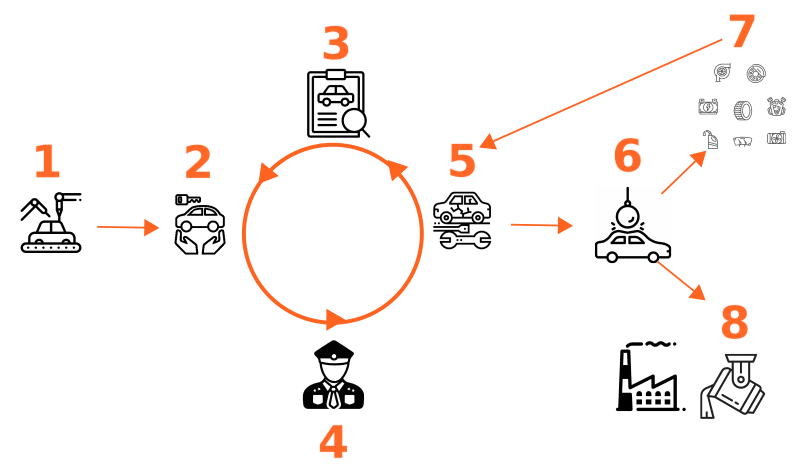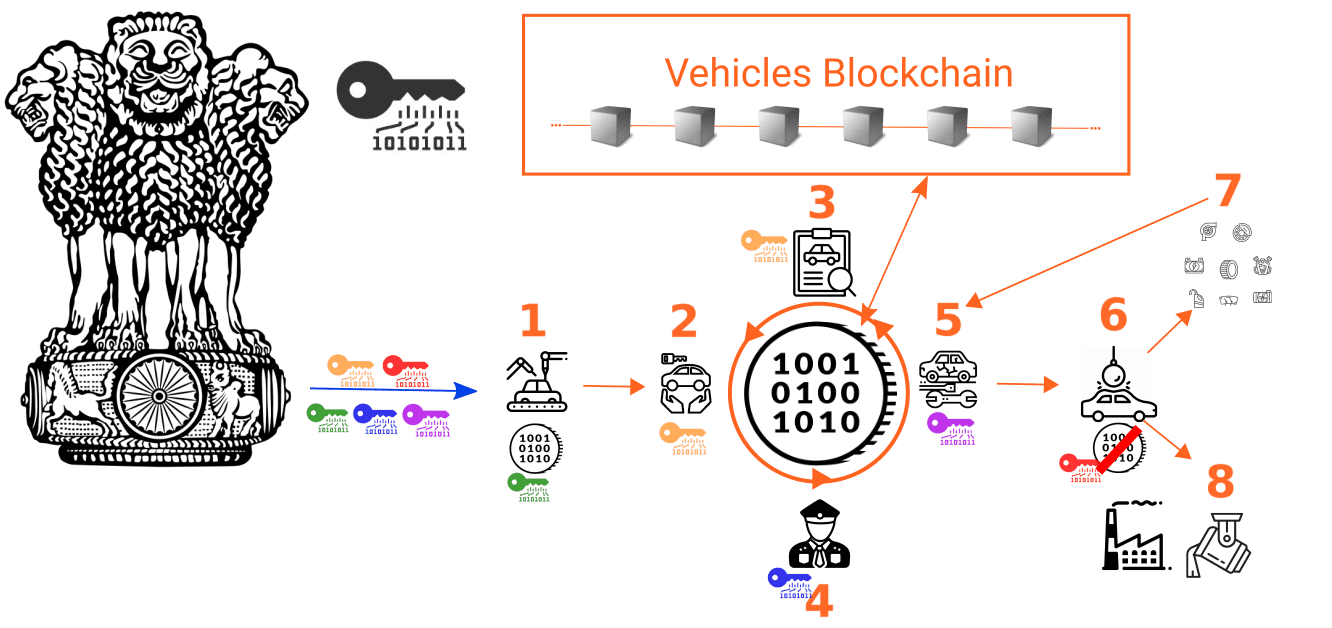Blockchain as the future of India's car industry
Introduction:
The vehicle ecosystem in India is complex and unstructured. Given the size of the country, the number and variety of vehicles, the rules and regulations applying to them, the aftermarket service sector and the spare parts market, it is incredibly difficult to know what is happening. Besides RTO registration documents, there is very little known about the status of a vehicle and this is an issue because untraceable vehicles not only causing huge harm to the environment, but are also an essential tool in criminal activities.
This article aims to present a possible technology-driven solution to control and oversee the lifecycle of a vehicle in India and thus ensure a better and more efficient vehicle management system. It is split into two parts: A quick overview of the life-cycle of a vehicle and then how a national blockchain-base system could impact this cycle by add traceability and value to this sector
Life-cycle of a vehicle without blockchain
The following graphic is a simple overview of the life-cycle of a vehicle without blockchain:

- The car is produced at the factory - this happens only once.
- Ownership change - while this is consistently the second step in a car’s lifecycle, it can happen various times and is the start of a “loop”. The following events of this 4 elements “loop” can happen in random order, none or multiple times.
- Information query: When you buy a second hand vehicle, knowing its history is all about vendor trust, you have very few ways of knowing for sure what happened to the car. Likewise, when the car gets to the mechanic, it is difficult for him to know what has been done to it in the past and when it happened.
- Bad parking, speeding, red light, infraction can occur (eventually multiple times)
- Maintenance and repairs, all cars go through the authorised service centers from time to time, one of those days will eventually end up step 6.
- At some point, the car is deregistered and scrapped;
- Some parts are resold second hand to fix circulating cars (5)
- Some parts are recycled into raw materials to be reinjected on the market.
